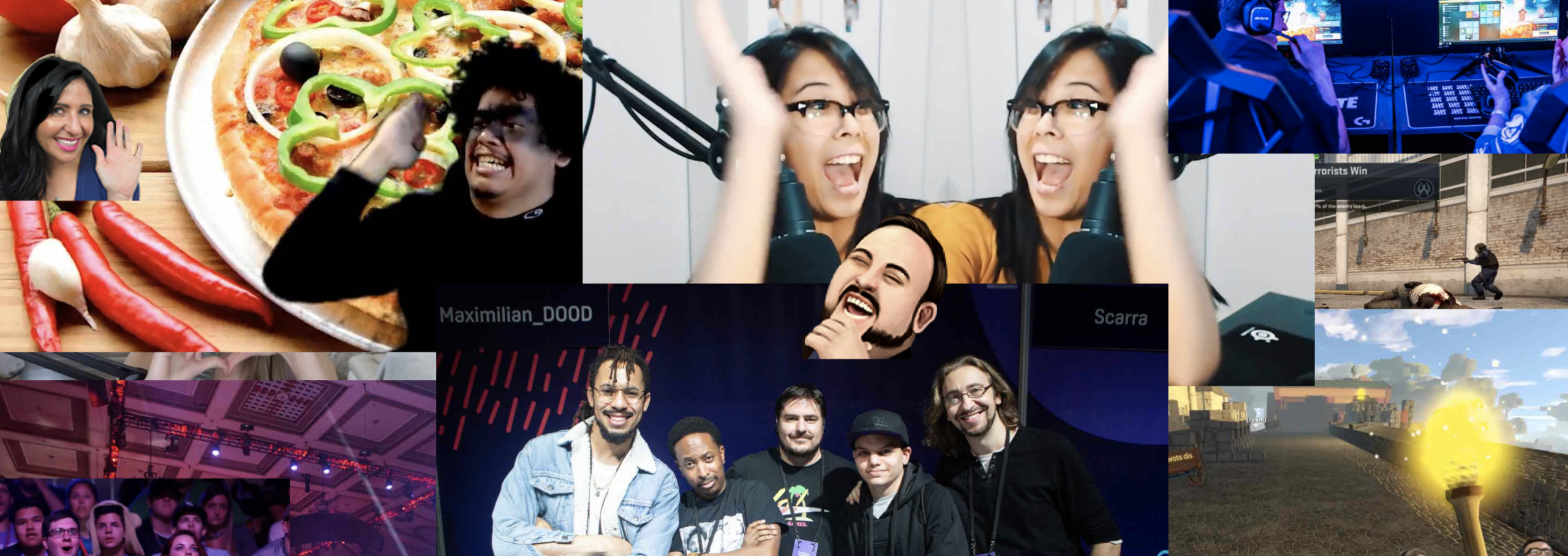As the COVID-19 pandemic roared across the globe in 2o2o, social distancing guidelines closed down stadiums and theaters everywhere. Suddenly Amazon-owned Twitch, already popular, took on an even greater resonance: the streaming platform represented a way to connect and experience, virtually, events and the sense of community that had been eradicated by the virus. Savvy brands understand the opportunities inherent in Twitch—a platform that’s currently filling a need, even as it continues to grow. Curious? Read on to learn more.
What Is Twitch?
Twitch is an online platform for livestreams, on which users can broadcast a livestream or watch other streamers. The platform was introduced in 2011, and while the focus has traditionally been on video games, Twitch is constantly evolving. It currently features music and lifestyle content, as well: Twitch users can watch anything from video gaming to music festivals, cooking shows, live tutorials of artists drawing (a la Bob Ross!) or professional sports. According to Ad Age, Twitch’s Just Chatting channel—essentially streamers chatting with the audience—has been the platform’s most-watched category in the second quarter. Sean Horvath, the chief revenue officer at StreamElements, notes, “We are starting to see a rise of streaming stars who don’t game at all . . . [T]hink of it like any talk show you watch on TV, but the difference is viewers can also make comments directly to the hosts.”
That’s right. Twitch’s interactive nature is supported by chat features; spectators can interact with one another and with the broadcasters (streamers), too. The platform has been described as a sort of virtual return to the social experience of arcade gaming. In the arcades, crowds would form around someone playing a certain game well, and people would talk about the game while they waited for their turn—and possibly pick up some tips and tricks from the player. Livestreaming on Twitch brings this interactive experience online, regardless of whether the point of discussion is a game—or a new recipe for chili.
Who Uses Twitch?
As Ad Age recently reported, Twitch hit a new milestone in spring 2020: Twitch exceeded 3 billion streaming hours in the first quarter of the year.
The audience skews younger. Kayla Carmicheal’s recent post on the Hubspot blog identifies users as teen gamers, with the largest group (22 percent) coming from the United States. Of the 28 million unique users per month in the U.S., she says, 80 percent are teen males. According to brand24.com, Millennial gamers also make up a significant portion of the Twitch audience. To be specific, Twitch reaches 50 percent of Millennial males in America.
Furthermore, Twitch users have been described as socially conscious and passionate about important causes. This year, the platform made headlines when it became a hub for social activism, with users creating Twitch channels for the express purpose of livestreaming Black Lives Matter protests. As Brielle Villablanca, a Twitch spokeswoman, told the New York Times, “[W]e’ve seen creators livestreaming content from the protests and engaging their communities in open conversations around race, inequality and how to effect change.”
And the platform attracts an audience open to advertising. According to brand24.com, 82 percent of Twitch users believe sponsorships benefit gaming. And 80 percent are receptive to brands sponsoring gamers and teams.
Advertising Options on Twitch
In short, the platform provides fertile ground for advertisers who want to connect with passionate, driven consumers. Marketing exposure on Twitch can take several forms, including:
- Partnering with an influencer. A streamer might include a brand in a sponsored stream title or on a tile on their channel page.
- Brand placement on the stream itself, or behind the streamer on their webcam.
- Branded emotes, like the “DoritoChip,” which between November 2, 2017, and January 8, 2018, was used by viewers an average of 17,330 times a day.
- Pre-roll ads, which can run before a stream.
What Brands Use Twitch?
Some savvy brands have already recognized the potential Twitch offers to connect with a young, engaged audience. And they’ve done so in creative ways. For example:
- Totino’s Pizza Rolls created an attention-grabbing game within the game during a sponsored stream. After each win, streamers rewarded themselves by eating pizza rolls live.
- Monster Energy Drinks sponsored Jaryd “Summit1G” Lazar, who streams with a stocked Monster mini fridge situated right behind him. During streams, viewers have asked him about his favorite drink flavors, and new flavor releases, calling even more attention to the brand.
- 1,000 Dreams Fund (1DF), a non-profit dedicated to providing 1,000 university women with grants, partnered with Twitch to give financial assistance to female streamers currently attending college. The aid could be applied to conventions like TwitchCon, or even new hardware, and the campaign introduced the non-profit to a completely new audience (the campaign also highlighted that Twitch doesn’t exclusively draw a male demographic).
- Nissin Foods partnered with influencer Pokimane, who demonstrated how noodles are a clear fit to the gaming lifestyle when she made Nissin instant noodles during a stream. Pokimane, who draws more than four million followers to her channel, added a layer of whimsy by incorporating a “Slurp Meter” graphic onscreen to measure how loudly she ate her meal.
- Career search engine Indeed used a pre-roll ad to demonstrate how a Twitch streamer and a digital artist used Indeed to connect—and ultimately collaborate.
Contact True Interactive
Eager to reach out to a Millennials audience? Interested in incorporating Twitch into your next campaign? Contact us. We can help.
